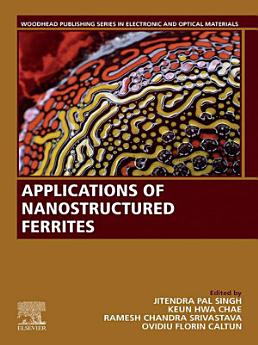Applications of Nanostructured Ferrites
આ ઇ-પુસ્તક વિશે
લેખક વિશે
Jitendra Pal Singh is the Ramanujan Fellow at the Manav Rachna University, Faridabad, India. His research interests are irradiation studies in nanoferrites, thin films, and magnetic multilayers, including the synthesis of ferrite nanoparticles and thin films, determining the magnetic, optical, and dielectric response of ferrites, and irradiation and implantation effects in ferrite thin films and nanoparticles.
Professor Keun Hwa Chae received his B.Sc. Physics in 1986 and M.Sc. Physics in 1988 from Yonsei University, Seoul, Korea. In 1994, he received his Ph.D. Degree in Physics from Yonsei University, Seoul, Korea. He is a post-doctoral fellow from 1995 to 1997 at Rutgers‐The State University of New Jersey, USA. He is currently working as a principal research scientist at the Korea Institute of Science and Technology, Korea since 2000. His research fields include ion beam modification of materials and characterization of materials using synchrotron radiation with special emphasis on ferrite research.
Professor R.C. Srivastava is currently working as Head of Department in the Department of Physics, G.B. Pant University of Ag. & Technology, Pantnagar, Uttrakhand, India. He joined Pantnagar in 1993. He did his Ph.D. from I.I.T. Kanpur in 1990. He is actively engaged in the synthesis and characterization of nanomaterials. His research interests include magnetic nanomaterials, spintronics, diluted magnetic semiconductors, superconducting materials, magnetic thin films etc. He is also working on the modification of materials by swift heavy ion irradiation.
Prof. O. F. Caltun received his B.Sc. Physics in 1980 and M.Sc. Physics in 1981 in Plasma Physics at Alexandru Ioan Cuza University of Iasi. In 1998 he defended his Ph. D. in magnetism. In 2007 he became full Professor at the same university. He has served as a visiting scientist at institutions in Taiwan, Germany and USA with the support of NSF of Taiwan, DAAD and Fulbright agencies. His 40 year career in research has focused on bulk and nanostructured magnetic materials for sensors, actuators and magnetic carriers for technological and medical applications. He has authored books and papers in magnetism and magnetic materials, and has supervised more than 100 B. Sc., M. Sc. and Ph. D. theses.




